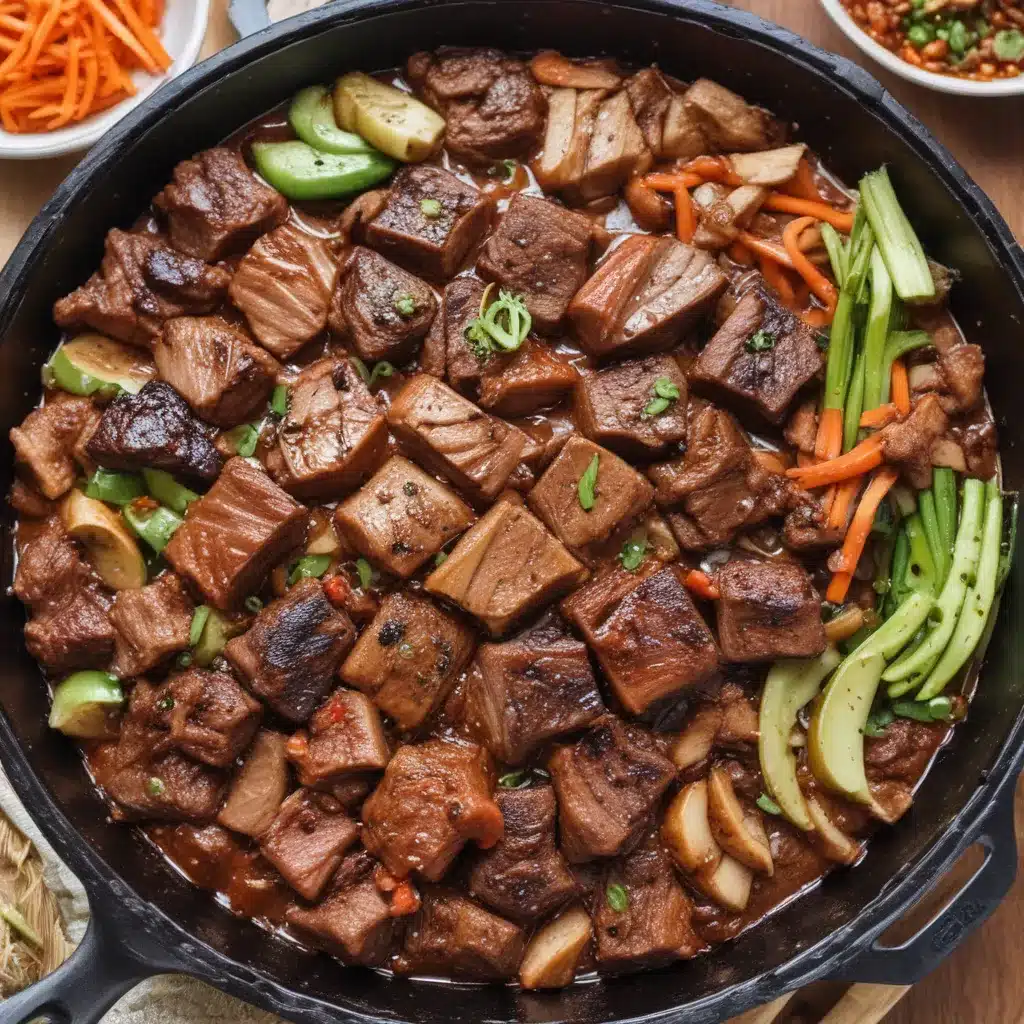
Turning Leftover Beef Ribs Into a Flavor Sensation
Ah, the age-old question – what on earth do I do with all these leftover beef ribs from my Korean BBQ feast? Fear not, my friends, for I have the perfect solution to transform those tasty, well-marinated morsels into a culinary masterpiece.
You see, I’ve been in your shoes more times than I can count. I’d be sitting there, happily munching away on those gloriously charred, melt-in-your-mouth galbi, only to be left with a pile of bones and a slight pang of guilt. “Why, oh why, did I order so much?” I’d lament. But then, a lightbulb would go off, and I’d remember the magic that can be created with a little leftover galbi.
Unlocking the Umami-Packed Potential of Leftover Galbi
Now, you might be wondering, “But Chris, those bones have already been cooked to perfection. Surely the flavor has been cooked out of them, right?” Wrong, my friend. Those leftover galbi bones are still bursting with an unbelievable amount of umami goodness, just waiting to be unleashed.
As I learned from the fine folks over at r/AskCulinary, those cooked-down bones are a treasure trove of flavor. The cartilage and remaining meat still have an incredible depth of flavor that can be used to create a robust, lip-smackingly delicious broth.
Transforming Leftovers into a Flavor Powerhouse
So, what’s the secret, you ask? It’s all about simmering those bones down to coax out every last drop of that beefy, savory essence. Simply toss the bones into a pot, cover them with water, and let them simmer away for a good couple of hours. The longer you let it go, the more concentrated and flavorful the broth will become.
And the best part? You can use this broth as the base for an absolutely stellar doenjang jjigae (Korean soybean paste stew). As my fellow Korean food enthusiast JinJoo over at Kimchimari explains, the rich, fatty broth from the galbi bones pairs beautifully with the savory-sweet depth of doenjang (fermented soybean paste).
Elevating the Stew with Gochujang
But wait, there’s more! To really take this dish to the next level, I like to add a touch of gochujang (Korean red chili paste) to the mix. The slightly spicy, funky kick of the gochujang helps to balance out the richness of the broth, creating a truly dynamic and mouthwatering flavor profile.
| Ingredient | Purpose |
|---|---|
| Leftover Galbi Bones | Provides a rich, umami-packed broth |
| Doenjang (Fermented Soybean Paste) | Adds savory-sweet depth to the stew |
| Gochujang (Korean Red Chili Paste) | Balances the richness with a spicy, funky kick |
Unlocking the Flavor of Leftover Galbi
Now, I know what you’re thinking – “But Chris, I don’t have any leftover galbi bones. What do I do then?” Well, my friends, have no fear, for I have a solution for that as well.
As I’ve shared on my blog, you can actually use bone-in beef short ribs as a more budget-friendly substitute for the traditional galbi. These bad boys are just as flavorful and tender, but at a fraction of the cost. Simply follow the same process of simmering the bones to extract that rich, beefy essence, and you’re well on your way to doenjang jjigae heaven.
Cutting Corners, Korean-Style
And here’s a little insider tip for you – when it comes to Korean cuisine, we’re all about finding creative ways to save a buck or two. As the good folks on r/AskCulinary pointed out, the bone-in beef short ribs are essentially the same thing as the pricey galbi, just with a different cut. So, you can enjoy all the flavor of galbi at a fraction of the cost.
Bringing it All Together
So, there you have it, folks – the ultimate way to transform your leftover galbi into a flavor-packed Korean feast. Whether you’ve got the real deal bones or you’re using a more budget-friendly substitute, the key is in that rich, umami-laden broth.
So, next time you find yourself with a pile of leftover galbi bones, don’t despair. Embrace them, simmer them down, and let the magic of doenjang jjigae work its delicious wonders. Your taste buds (and your wallet) will thank you.
